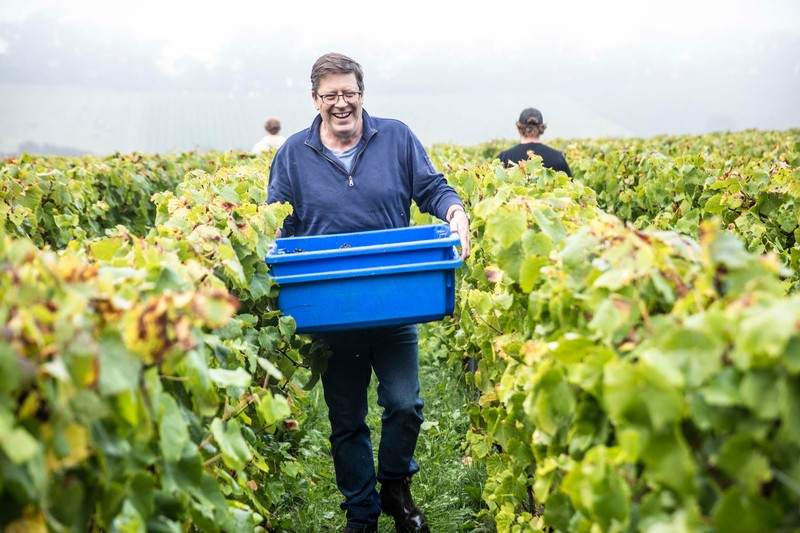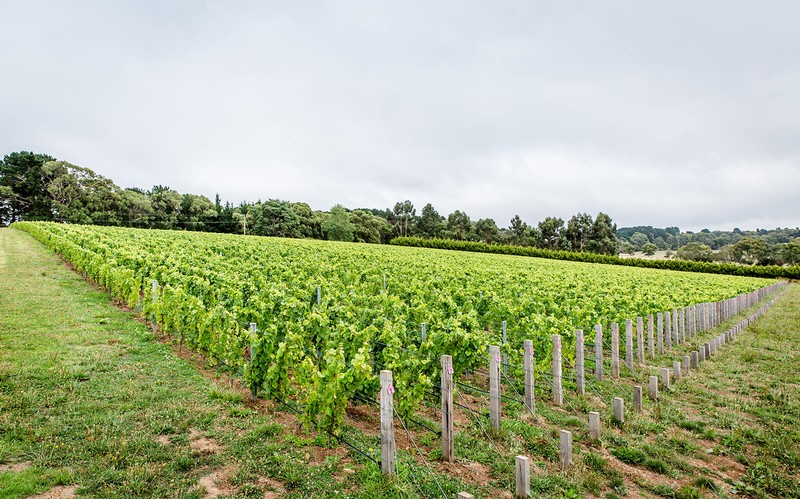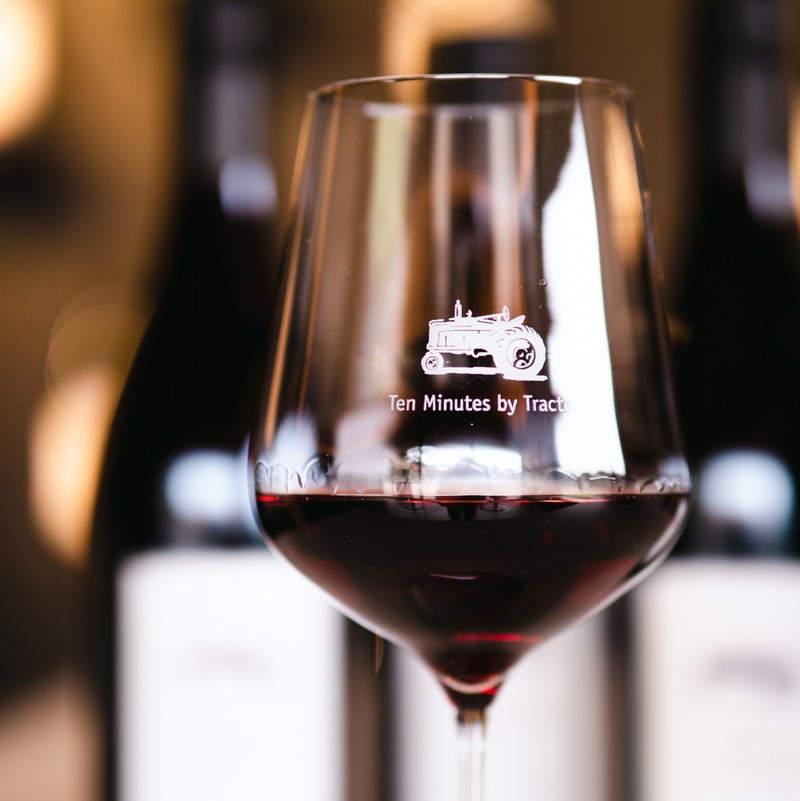News
Why do high density planting?

Historically, vine density and row spacing was a function of available land, equipment and techniques of the time. Pre-phylloxera vineyards in Burgundy were planted using a mass layering technique that resulted in very high planting densities (30,000 vines per hectare or more). Vines were arranged in a random pattern with all work in the vineyards done by hand.
In the late 1800s phylloxera destroyed the ‘own roots’ vines in Burgundy and the vineyards were subsequently replanted on American rootstock and arranged in the trellised rows we see today. This replanting coincided with the use of the horse as a labour-saving practice so vines were replanted in rows in the ‘classic’ 1m x 1m spacing. The row width was determined by the width of a horse; machinery that followed later was adapted to suit.
In Australia, as in France, vineyard density has also been determined by available machinery. However, in Australia commercial vineyard tractors are typically based on farm or orchard models with an overall width of 1.5m to 2m; this has necessitated vineyard rows of between 2.5m to 3.5m for adequate machinery access and clearance.
Over the past decade, many cool climate wine growers in Australia have learnt that vines grown with closer spacing between plants and rows have greatly improved quality outcomes. However, the density limit remains dictated by the tractor’s minimum width.
Around the world, consumers of high quality Pinot Noir and Chardonnay look to Burgundy as the benchmark region for the highest quality expression of the two varieties. This highlights the need for Australian producers to examine current practices and techniques and look for areas of potential quality improvement. Recently, commercial vine nurseries in Australia have begun importing new selections of highly regarded Burgundian Pinot Noir and Chardonnay clones that have been widely planted and credited for positive increase in wine quality and complexity.
In an ongoing effort to explore the influence of best viticulture practices on wine quality we have established this new High Density (HD) vineyard, made possible by importing some specialised European vineyard equipment able to work in 1m rows and allowing us to plant our vineyard at the same density used on the best slopes of the Cote d’Or.
Very early indications are that the new plant densities will have very positive impact on fruit quality which will help elevate the wine quality and structure to a higher level. Based on experience with other HD vineyards we expect to see…
- smaller berries and bunches
- better crop load balance
- more cross shading of canopy, fruit and vineyard floor
- humidity levels tend to be higher
- cane, bunch and berry stem lignification are more developed.
These are all key attributes for quality wine production and help to counteract climatic challenges such as sunburnt fruit and vine stress from dry soil and low humidity.
Discover more about our High Density Spedding Vineyard and Gabrielle Vineyard.
The Real Review - Close planted vineyards and wine quality

Close-planted vines produce better wine, no?
Well, they must, because the classic French wines from Burgundy, Champagne, Chablis, and most other places are grown in vineyards that are close-planted, much closer than typical Australian vineyards.
Most close-panted vineyards in Australia are very young, but youth may have been immaterial as the Bannockburn pair were by common agreement the hardest to tell apart.
But it’s not that simple.
What works in Volnay or Vouvray doesn’t necessary translate to Australian conditions.
A tasting at a workshop on close-planting, conducted as part of the recent Pinot Noir Celebration Australia on the Mornington Peninsula, was inconclusive.
The tasting was of eight glasses of pinot noir, two each from four producers. One was off a close-planted vineyard, the other off a conventional vineyard of the same producer, in the same locality, and using the same winemaking. All were MV6 clone.
The wines were Bindi Darshan 2019 (close) and Bindi Original Vineyard 2019; Ten Minutes By Tractor McCutcheon Vineyard 2022 and Ten Minutes By Tractor Spedding Vineyard 2022 (close); Bannockburn Estate 2019 and Bannockburn Serré 2019 (close); and Scorpo Old Cherry Orchard 2021 (close) and Scorpo Eocene 2021. The wines were randomised and the tasters were asked to try to tell which was the close-planted in each pair. Most—possibly all of us—failed to*.
Most close-panted vineyards in Australia are very young, but youth may have been immaterial as the Bannockburn pair were by common agreement the hardest to tell apart, although the Serré vines were mature (average age 39 years).
So, what drives vignerons like Bindi’s Michael Dhillon and Ten Minutes By Tractor’s Martin Spedding to plant vines at high density, which is estimated to cost at least four times as much to establish?
The panel laid out the advantages and drawbacks of high-density.
Advantages
- The entire vineyard is involved; there is no idle land.
- Greater lignification (the stems are woodier, which is useful for whole-bunch fermenting).
- Roots drive deeper, making for stability of moisture status.
- Saves irrigation water (Spedding said it uses half the water).
- Smaller bunch and berry size, which increases concentration.
- Shading of the fruit-zone, so less sunburn risk, and leaf-plucking is safer.
- Grape yield per vine is reduced so more goodies go into each berry.
Drawbacks
- Setup cost is estimated between four and five times that of a conventional vineyard.
- Fungal disease problems are increased in wet seasons.
- ‘Normal’ vineyard machinery doesn’t fit the rows.
- Reduced yield per vine may be seen as a disadvantage depending on quality and yield per hectare.
- In cool, high-altitude sites, the vines don’t set fruit if they’re too close.
“You wouldn’t do it unless you had a fantastic site,” said Dhillon.
Spedding and Dhillon both have very small crawler tractors to work their high-density vineyards, and these, while expensive, have an added advantage of reducing soil compaction: “less than a single human walking down the row.”
What is a high-density? The Burgundy and Champagne standard is one metre by one metre, which results in 10,000 vines per hectare. Traditional Aussie vineyards have as few as 2,500 vines per hectare. The panel, consisting of Spedding, Dhillon, climatologist Greg Jones and viticulturist Tim Brown, agreed that anything less than 1.5m spacings is high-density.
Read more here: https://www.therealreview.com/2023/03/07/close-planted-vineyards-and-wine-quality/
Decanter - Australian Pinot Noir: 25 exciting wines to try

With the popularity of lighter-style red wines showing no signs of abating, it might be time to swap your Aussie Shiraz or Cabernet Sauvignon for a Pinot Noir. Tina Gellie picks out 25 cool-climate Australian Pinot Noirs to try.
There’s 4,948ha of Pinot Noir across Australia (source: Wine Australia 2022), which represents just 3.7% of the total area under vine.
It might be the fourth most planted red variety, well behind Merlot with about 8,500ha, but truly small fry when you consider the country has five times as many plantings of Cabernet Sauvignon, and a whopping eight times as many for Shiraz.
But with the global trend for lighter-style reds showing no signs of abating, this is good news for the country’s Pinot Noir producers. Particularly as even the most expensive represent a value alternative to Burgundy as well as premium-priced examples from neighbouring New Zealand.
COOLART ROAD PINOT NOIR 2019
Martin Spedding makes four single-vineyard wines, wth Coolart Road always the biggest, boldest and most darkly fruited. Grippy, textured tannins and a firm acid line give great structure to the umami-like flavours of mushroom, beetroot and black cherry. Lingering smoky incense and rose petal notes lift the finish.
ESTATE PINOT NOIR 2018
This estate Pinot is now split into the Up the Hill and Down the Hill cuvées, but in this vintage was a barrel selection of Martin Spedding's four vineyards. This is seductively savoury wine, with bold earthy beetroot and undergrowth tones to join autumnal plum and black cherry. Vanilla chai oak spice and supple tannins too.
10X PINOT NOIR 2021
Practically a Coolart Road single-vineyard wine with just 5% Wallis fruit blended in. It's a wonderfully pure expression of ripe black cherry and raspberry fruit kept arrow straight by focused, racy acidity and satin-textured tannins. Dark, earthy notes add savoury complexity.
Read more here: https://www.decanter.com/premium/australian-pinot-noir-25-exciting-wines-to-try-496960/